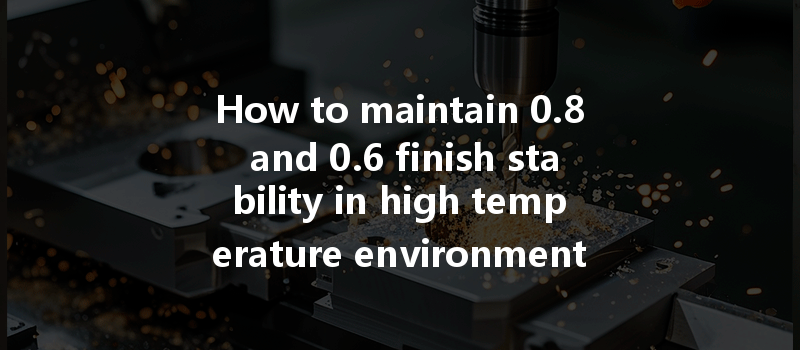Did you know that nearly 70% of CNC machining issues related to surface finish arise due to uncontrolled temperature fluctuations? As industries increasingly lean towards high-performance materials, traversing the intricate pathways of CNC machining becomes inevitable. Particularly in environments where temperatures soar, achieving and maintaining a precise finish—like 0.8 and 0.6—can feel like a Herculean task. So, how do we sustain that glossy finish amid the heat?
In this comprehensive guide, we will explore the intricate dynamics of CNC machining in high-temperature scenarios, outlining the fundamental techniques and advanced strategies you can employ to stabilize these desired finishes.
Understanding Finish Specifications
Before diving into the strategies, it’s important to clarify what we mean by 0.8 and 0.6 finishes. These figures refer to surface finish measurements, specifically regarding the Ra (Roughness Average) value in micrometers. A finish of 0.8 signifies moderate smoothness ideal for functional components while 0.6 typically denotes a finer finish often used in cosmetic or high-performance applications.
Why Surface Finish Matters
In CNC machining, achieving these finishes is challenging, particularly when responding to temperature fluctuations that can warp materials or disrupt machining processes.
Challenges Faced in High-Temperature Environments
Strategies for Maintaining 0.8 and 0.6 Finishes
The type of material you use plays a crucial role in its performance under high temperatures. Here are some of the most favorable options:
Choose materials that not only suit your application but also withstand temperature fluctuations without sacrificing finish quality.
Your choice of machining tools is vital. Use tools made from materials that maintain hardness and wear resistance in high-temperature conditions. Carbide tooling or high-speed steel (HSS) are excellent options. Additionally, consider the following:

Effective cooling strategies can counter the challenges posed by high temperatures:
Adjusting your CNC setup can significantly affect the outcome of your machining job. Focus on the following parameters:
Implementing real-time monitoring techniques can create an immediate feedback loop to ensure process stability:
Ensure your tools are maintained regularly. Dull tools will generate additional heat and lead to poor finishes. Here’s a maintenance checklist:
Case Study: Implementation of Recommendations
In a recent industry application, a manufacturer faced issues while producing components in a high-temperature environment. After analyzing their processes, they found that the combination of using HSS tools and a standard flood cooling system was inadequate for maintaining the desired Ra finish of 0.
Achieving a consistent surface finish of 0.8 or 0.6 in high-temperature environments during CNC machining is no small feat. By integrating the proposed techniques—ranging from material selection to CNC parameter optimization—you can not only solve existing challenges but also develop a robust process that can withstand the rigors of high-performance manufacturing.
It’s essential to remember that maintaining high-quality finishes directly correlates with increased product longevity, performance, and overall customer satisfaction. Investing the time and resources into mastering these techniques ensures that your machined products will consistently meet rigorous industry standards.
Reflect on this: all the techno-scientific discussions coalesce into one reality—finishing matters. Whether you’re producing aesthetic components or providing essential parts for critical machinery, the foundation lies in how well you manage the complexities of CNC machining within high-temperature environments. The journey to achieving perfect finishes may be intricate, but the results are well worth it.






